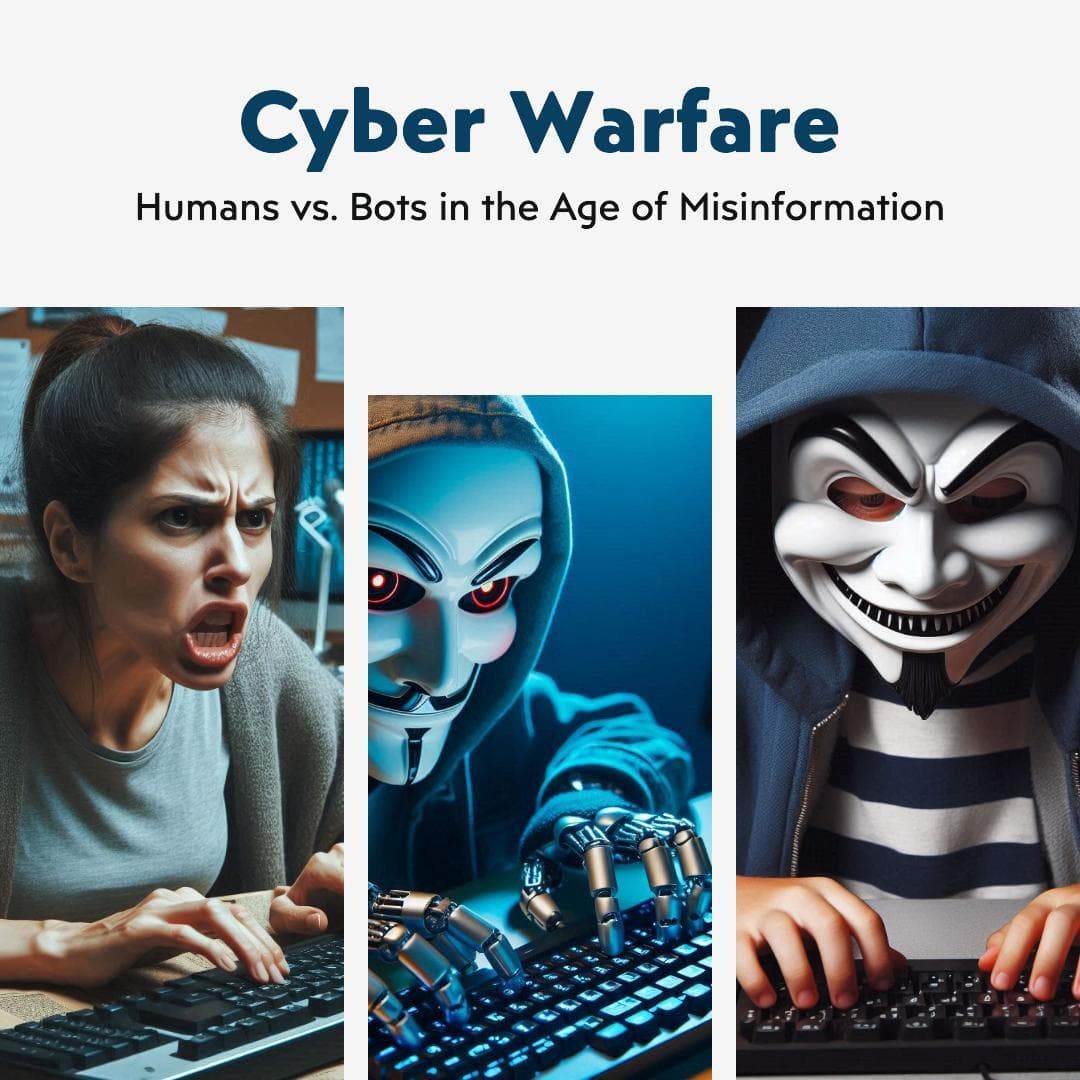Cyber Warfare: Humans vs. Bots in the Age of Misinformation

Published on: (Updated on: )
How Bots Are Fueling Hate in the Digital Age
In a world saturated with technology, a new kind of battle brews beneath the surface of our everyday lives. It’s not the combat of futuristic robots against humans that we often see in Hollywood blockbusters like Terminator or I , Robot. Instead, we find ourselves facing a more insidious foe—a digital adversary that lacks a physical form but is capable of wreaking havoc on our collective consciousness. Enter the bots—programmed entities designed not to assist us, but to sow discord, spread misinformation, and amplify hate.
These digital agents operate quietly within social media ecosystems, leveraging algorithms and data to influence public opinion and incite divisions among individuals and communities. Unlike our sci-fi counterparts, these bots often masquerade as ordinary users, making their true intentions harder to discern. They outwit the filters of genuine human interaction, camouflaging themselves while executing a coordinated strategy to amplify discord.
The Rise of the Bot Army
In recent years, the proliferation of bots has dramatically reshaped online discourse, sometimes to the detriment of civil society. Behaviors that were once considered fringe viewpoints or maliciously intended speech can now gain momentum through these automated programs, flooding timelines and feeds with hate speech, propaganda, and outright lies. They can quickly create the illusion of consensus, turning isolated thoughts into pervasive narratives that affect real-world behaviors and sentiments.
For instance, platforms like X (formerly Twitter) have faced intense criticisms over the perception that they serve as breeding grounds for hate speech under the guise of freedom of expression. The alarmingly easy propagation of toxic ideologies paired with the shield of anonymity presents a perfect storm. In societies already grappling with racial tensions and socio-political divides, the dangerous dance of bots and hate speech could have catastrophic consequences. Recent events, such as the riots in the UK, highlight the tangible outcomes of this digital menace. These incidents serve as a grim reminder of how misinformation and inciting speech can escalate into real-world violence and unrest.
The Human Response
As individuals engaging within digital spaces, it’s crucial to foster a discerning eye. While it may be an innate human reaction to confront hate speech head-on, it is imperative to exercise caution. The digital landscape is fraught with traps laid by bots looking to incite anger and escalate tensions. Responding to hate-filled comments in fury may lead to a cycle of hostility, often resulting in repercussions that extend beyond a mere social media spat. Comments made online can quickly transition from a keyboard to a courtroom, as the domain of legal liability expands with the digital age. For instance a UK residence (Jordan Parlour, 28) was arrested on the allegation of inciting racial hatred on Facebook amid the ongoing UK riots.
Instead of fueling the fire, consider utilizing the reporting mechanisms available on most platforms. If you encounter hate speech, it may not be a real person you’re engaging with but rather a bot or a fake account under false pretenses. In this digital warfare, reporting and flagging problematic content can serve as a first line of defense, potentially stifling the bot’s propagation of harmful rhetoric.
Looking Forward: A Call to Action
The battle against the invisible menace of bots is not one that can be fought by individuals alone. As the landscape of online communication continues to evolve, lawmakers and tech leaders must step up to create robust frameworks that address the proliferation of misinformation and hate speech. Striking a balance between upholding free speech and curbing harmful rhetoric will demand serious introspection and dialogue.
In conclusion, the age-old struggle of humans versus machines has taken on a new form. Instead of a war of physicality, we find ourselves in a psychological and emotional battleground where bots are the unseen architects of discord. As we navigate through this complex terrain, let’s remain vigilant, educated, and united in our commitment to cultivate healthier online spaces. The fight against the invisible menace may be challenging, but it is one we can face together.